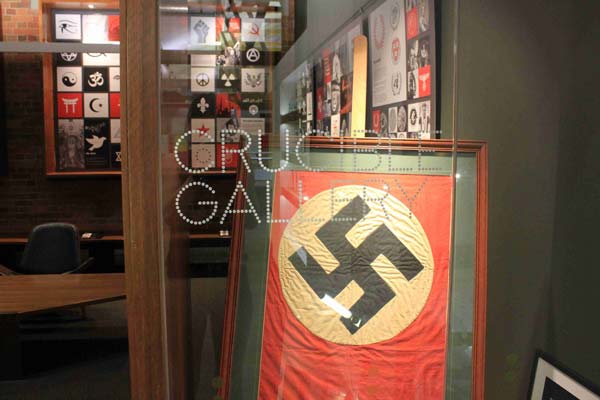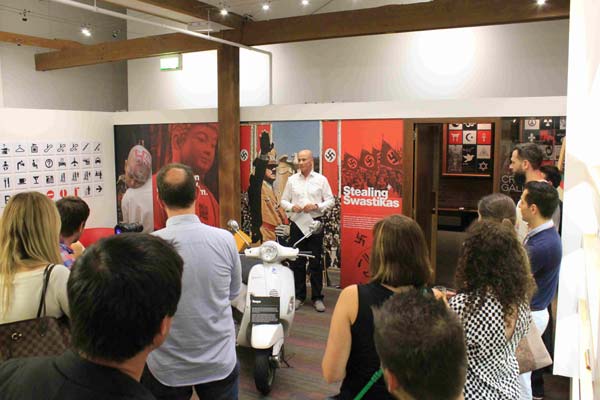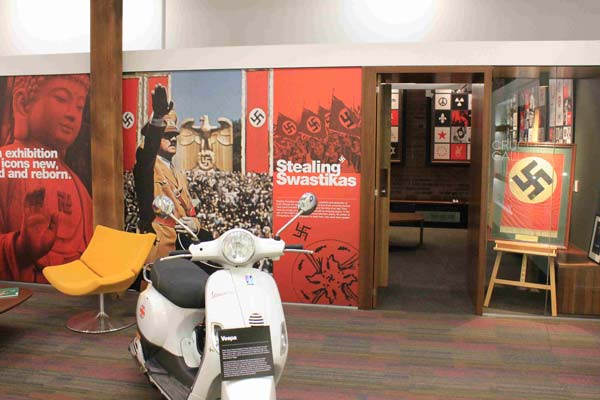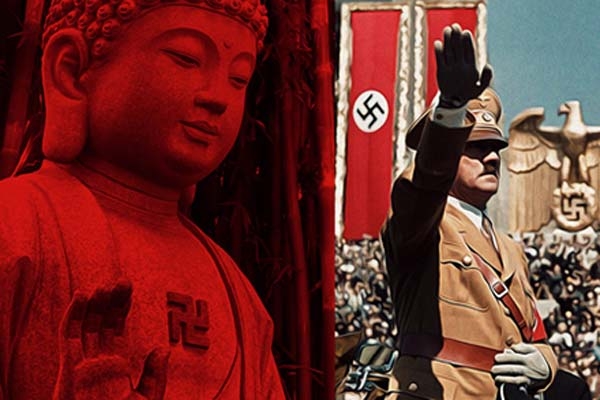Over the past two years local advertising agency BCM has staged a number of exhibitions at their Fortitude Valley offices with a meeting room doubling as an art space.
Available to artists and curators as part of a partnership with Artisan, the Crucible Gallery offers artists the opportunity to explore ideas free of the pressure and constraints of commercial galleries.
The latest show 'Stealing Swastika's is an inside job with BCM staffers Steve Schollum and Nick Ikonomou joining forces to explore the history, evolution and abduction of icons through the ages.
 © Jon Adams
© Jon AdamsUsing storyboards and video, along with some masterpieces of mechanical design – yep there’s a Vespa and Harley Davidson to drool over – 'Stealing Swastikas' uses some of the most recognisable symbols in the world as the basis for the exhibition.
The show is documentary-based rather than expressive. You could say it is more a ‘show of art’ than an ‘art show’ but it covers a lot of ground from ancient symbols such as the ankh (an Egyptian symbol of the cross which reads 'life' in hieroglyphics) through to the ubiquitous Facebook icon.
{youtube}P1nWEGWViKk{/youtube}
Of course the most confronting and famous of all icons is the swastika, which greets visitors at the door on an original Nazis banner, recovered from Hitler’s personal retreat.
“When we started looking at contemporary iconography, it was the swastika which evoked the greatest reaction,” says Art Director and co-curator Steve Schollum. “We wanted something that was not only confronting but symbolised both the power and the history of iconography and the swastika does that.”
 © Jon Adams
© Jon Adams“It’s also a great example of how a symbol can be appropriated and its meaning altered according to its use,” says fellow curator and writer Nick Ikonomou, explaining that the swastika was used at least 5,000 years before Adolf Hitler designed the Nazi flag.
In fact, the swastika had been used in Neolithic Eurasia, and to this day remains a sacred symbol in Hinduism, Buddhism, Jainism, and to the Navaho Indians of North America.
 © Jon Adams
© Jon AdamsThere are plenty of, “wow, I didn’t know that,” moments as you view the display which includes some fun (and disturbing) facts – such as the young student who created Nike’s famous tick logo being paid a paltry $35 for their work.
'Stealing Swastikas' shares a lot of the reductive qualities of iconography. It tells a big story with pictures – with some text to fill in the gaps.
 © Jon Adams
© Jon AdamsThe show is worth a visit, particularly for those with an interest in graphic design, communications and marketing. It is informative, visually rich and surprising in its breadth.
And if you are in any doubt about the power and longevity of icons, take a look at your smart phone. Icons are everywhere.
'Stealing Swastikas' exhibits at BCM's Crucible Art Gallery.






